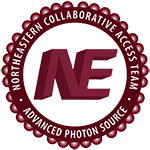Crystal structure of a seven-substitution mutant of hydroxynitrile lyase from rubber tree.
Publication Type:
Journal ArticleSource:
Acta Crystallogr F Struct Biol Commun, Volume 81, Issue Pt 9, p.398-405 (2025)Keywords:
Aldehyde-Lyases, Amino Acid Sequence, Amino Acid Substitution, Catalytic Domain, Cloning, Molecular, Crystallography, X-Ray, Escherichia coli, Gene Expression, Hevea, Models, Molecular, Mutation, Plant Proteins, Recombinant ProteinsAbstract:
<p>The α/β-hydrolase fold superfamily includes esterases and hydroxynitrile lyases which, despite catalyzing different reactions, share a Ser-His-Asp catalytic triad. We report a 1.99 Å resolution crystal structure of HNL6V, an engineered variant of hydroxynitrile lyase from Hevea brasiliensis (HbHNL) containing seven amino-acid substitutions (T11G, E79H, C81L, H103V, N104A, G176S and K236M). The structure reveals that HNL6V maintains the characteristic α/β-hydrolase fold while exhibiting systematic shifts in backbone and catalytic atom positions. Compared with wild-type HbHNL, the C positions in HNL6V differ by a mean of 0.2 ± 0.1 Å, representing a statistically significant displacement. Importantly, the catalytic triad and oxyanion-hole atoms have moved 0.2-0.8 Å closer to their corresponding positions in SABP2, although they remain 0.3-1.1 Å from fully achieving the configuration of SABP2. The substitutions also increase local flexibility, particularly in the lid domain covering the active site. This structural characterization demonstrates that targeted amino-acid substitutions can systematically shift catalytic geometries towards those of evolutionarily related enzymes.</p>
